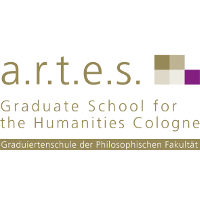Doctoral dissertation project of Gabriele Baratelli
The Enigma of Symbols. A Phenomenological Account of the Formalization of Natural Language (working title)
“Formalization” is the theoretical act that grounds and legitimizes the gnoseological use of purely symbolic languages. At first established within the mathematical domain during the XVIth century, the latter became afterwards the indispensable scientific tool to express laws and to define concepts in an “exact” way. Besides their theoretical value, they are also instruments having a practical scope as they are at the basis of the more recent developments in computer science. However, it is still controversial what formalization really is. To tackle this problem, I’ve chosen to pursue a “critical” strategy, namely a theoretical perspective that does not take for granted the validity of this practice, as it is often done, but that investigates its sources of legitimization. Given the historical origin of formalization in modernity, as it has been shown by Jacob Klein, my questions will concern its ideal conditions of possibility as well as the limits of the specific kind of truth that it brought about. Ideally, it will be a contribution to a much wider project that could go under the heading of “critique of symbolic reason”.
More specifically, the critical attitude that guides my project can be defined as “phenomenological”. Not only because I will take into account the methods and the theories concerning formalization adopted by some of the most important exponents of this philosophical tradition (especially, Edmund Husserl, Jacob Klein and Oskar Becker), but also because this research will be, reflectively, an evaluation of the role that formalization plays in phenomenology itself. In fact, the “enigma of symbols”, as we may call it, is at the core of Husserl’s original turn to phenomenology, at the beginning of his philosophical career, until his final unfinished work, “The Crisis of European Sciences”. Throughout this trajectory phenomenology was faced to the fundamental question of the “sense of the formulas” and to the threat of mechanization that necessarily accompanies symbolic thinking.
The problem of formalization can be certainly taken through different angles. My viewpoint will focus on the so-called “formalization of natural language”, the historical phenomenon that mainly characterizes modern logic. The tensions between exactness and relativity of meaning, calculus and sense, deduction and intuition acquire here a paradigmatic character. The guiding hypothesis of my research is that this formalizing process does not simply represent a technical innovation within this scientific practice, a mere further step along the line of progress. Rather, it is considered as an exemplary case of a wider transformation that involves the way in which we form concepts and we deal with them.
Short biography
Gabriele Baratelli studied philosophy at the University of Turin, where he graduated in November 2019 with a Master thesis devoted to Jacob Klein’s philosophical thought, supervised by Gaetano Chiurazzi and Burt Hopkins. For the realization of his thesis, he spent the 2018-2019 academic year at the University of Lille thanks to a project supervised by Claudio Majolino. Since April 2020 he is a doctoral student within the a.r.t.e.s Integrated Track
Contact: gbaratel(at)smail.uni-koeln.de
Presentations
“Creative Forgetting: the Strange Case of the Historicity of Numbers”, 21/09/2020, AHRC Interdisciplinary Conference, University of Cambridge.
“Jacob Klein and the Translation of Natural Language into Symbolic Language in Modern Mathematics”, 15/04/2019, Czech Academy of Sciences, Prague.
Publications
“How Letters become Symbols. Jacob Klein’s Genalogy of Formalization”. The New Yearbook for Phenomenology and Phenomenological Philosophy, XVIII (forthcoming).
“Georg Cantor’s Principle of Finitism or the Actualization of Infinite Potentialities”. Tròpos (forthcoming).
Cover photo: Piet Mondrian, Composition with Blue and Yellow (1930). https://en.wikipedia.org/wiki/Composition_with_Red_Blue_and_Yellow#/media/File:Piet_Mondriaan,_1930_Mondrian_Composition_II_in_Red,_Blue,_and_Yellow.jpg
